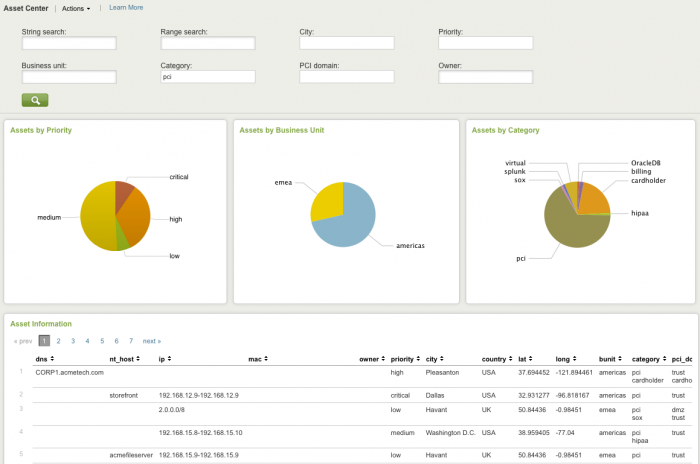Asset Center
The Asset Center dashboard provides a view into the Asset table within Splunk that stores the information for each of the cardholder assets in scope for monitoring.
Use this dashboard to see a list of the assets, the owners for each asset, and other relevant information such as asset categories, business units, and PCI domain that are used in the filtering for each report.
Available filters:
| Filter | Description |
|---|---|
| String search | Add additional search parameters to this field |
| Range search | Search for an IP address, or a range of IP addresses |
| City | Search by city |
| Priority | Search by priority (options are low, medium, high, or critcal) |
| Business unit | Search by business unit (for example, "americas") |
| Category | Select an asset categories to report on (the default is "pci") |
| PCI domain | The PCI domain in which the asset is located |
| Owner | The owner of the asset |
This dashboard displays:
- Assets by Priority - Assets priorities (low, medium, high, and critical) displayed as a pie chart. Mouse over sections for additional details.
- Assets by Business Unit - Assets by business unit (for example, emea, the americas) displayed as a pie chart. Mouse over sections in the chart for additional details.
- Assets by Category - Assets are displayed by category in a pie chart. Mouse over sections in the chart for additional information.
- Asset Information - A detailed listing of each asset, showing fields for
dns, nt_host, ip, mac, owner, and so on. Click "View full results" for more information.
| PCI Security Standards | Identity Center |
This documentation applies to the following versions of Splunk® App for PCI Compliance: 2.1.1

 Download manual
Download manual
Feedback submitted, thanks!